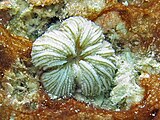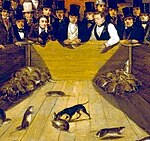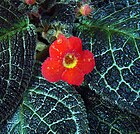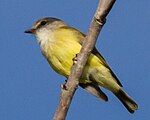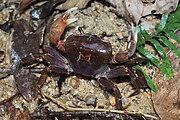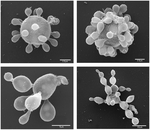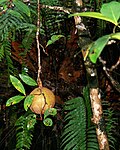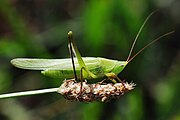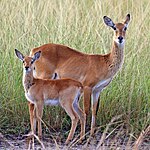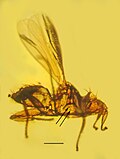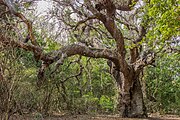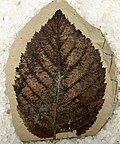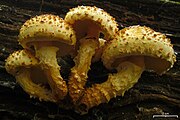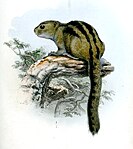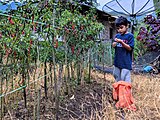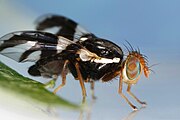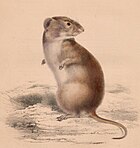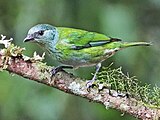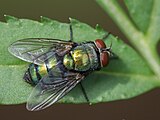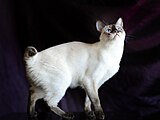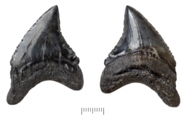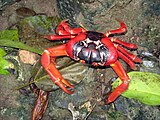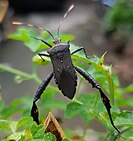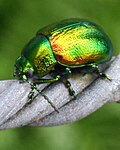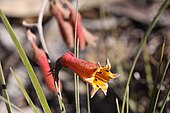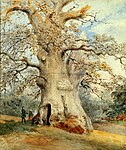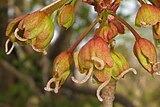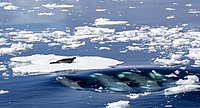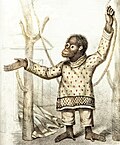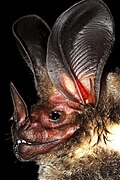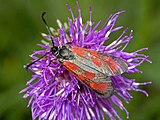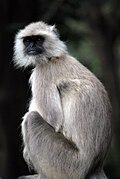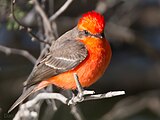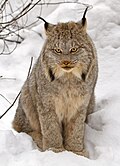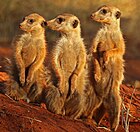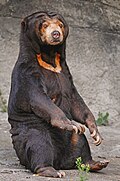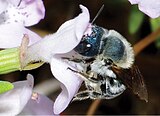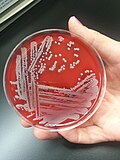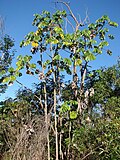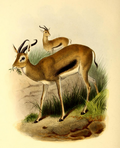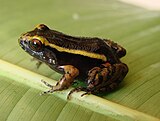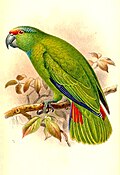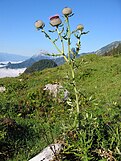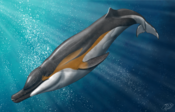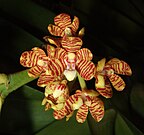User talk:Ambrosia10/Archive 4
| This is an archive of past discussions with User:Ambrosia10. Do not edit the contents of this page. If you wish to start a new discussion or revive an old one, please do so on the current talk page. |
| Archive 1 | Archive 2 | Archive 3 | Archive 4 | Archive 5 | Archive 6 |
July 2018 at Women in Red

| ||
|
(To subscribe: Women in Red/English language mailing list and Women in Red/international list. Unsubscribe: Women in Red/Opt-out list) --Rosiestep (talk) 14:04, 28 June 2018 (UTC) via MassMessaging |
Disambiguation link notification for July 15
An automated process has detected that when you recently edited Bityla defigurata, you added a link pointing to the disambiguation page Francis Walker (check to confirm | fix with Dab solver).
(Opt-out instructions.) --DPL bot (talk) 09:11, 15 July 2018 (UTC)
- Fixed. -Ambrosia10 (talk) 16:04, 15 July 2018 (UTC)
August 2018 at Women in Red

| ||
|
Latest headlines, news, and views on the Women in Red talkpage (Join the conversation!): (To subscribe: Women in Red/English language mailing list and Women in Red/international list. Unsubscribe: Women in Red/Opt-out list) --Rosiestep (talk) 11:22, 23 July 2018 (UTC) via MassMessaging |
This Month in GLAM: July 2018
| ||||||
Wish
Hello. Help add image for Maureen Wroblewitz. Thank you.125.214.51.197 (talk) 06:29, 19 August 2018 (UTC)
- I would be happy to but there doesn't appear to be any images of her in Wikimedia commons, nor can I easily find any appropriately licensed images to add to Wikimedia commons for reuse in Wikipedia. If you load an appropriately licensed image into Wikimedia commons I'd be happy to add it into her article. --Ambrosia10 (talk) 06:34, 19 August 2018 (UTC)
September 2018 at Women in Red

| ||
|
Latest headlines, news, and views on the Women in Red talkpage (Join the conversation!):
(To subscribe: Women in Red/English language mailing list and Women in Red/international list. Unsubscribe: Women in Red/Opt-out list) --Rosiestep (talk) 01:55, 26 August 2018 (UTC) via MassMessaging |
A barnstar for you!
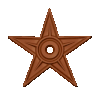
|
The Tireless Contributor Barnstar |
| I was so inspired by your talk I decided to create a new species page for the New Zealand flora. Take a look at Nemesia floribunda Qgroom (talk) 19:15, 29 August 2018 (UTC) |
This Month in GLAM: August 2018
| ||||||
October 2018 at Women in Red

| ||
|
(To subscribe: Women in Red/English language mailing list and Women in Red/international list. Unsubscribe: Women in Red/Opt-out list) --Rosiestep (talk) 14:46, 28 September 2018 (UTC) via MassMessaging |
hello
Hello Ambrosia - thanks for your help--Writescience (talk) 07:12, 9 October 2018 (UTC)
This Month in GLAM: September 2018
| ||||||
Get ready for November with Women in Red!

Continuing: | ||
|
Latest headlines, news, and views on the Women in Red talkpage (Join the conversation!): (To subscribe: Women in Red/English language mailing list and Women in Red/international list. Unsubscribe: Women in Red/Opt-out list) |
--Megalibrarygirl (talk) 18:40, 14 October 2018 (UTC) via MassMessaging
Thanks again for your help!
Hi Ambrosia, thanks for your help at the Edit for equity workshops! A couple of queries: I've made these pages so far: Barbara Else, Anna Mackenzie, Mary-anne Scott, Kyle Mewburn and Rachael Craw. I've added photos for Anna (which she uploaded), did I do that correctly?? For the most recent one – Rachael, I’ve added Categories and Banners, but I can't remember all the steps for Authority control and linking to wiki data. What comes after Edit, and Insert Template? Is there a Help page anywhere for that? Thanks again! --Pippipip (talk) 21:31, 19 October 2018 (UTC)
- Done. Answered on Pippipip's talk page.--Ambrosia10 (talk) 01:28, 20 October 2018 (UTC)
Me again with another query! I've created a page for NZ children's/YA writer Cath Mayo. It shows up if you search on Cath Mayo from the main Wikipedia page, but it's not showing up on a Google search. I added her name to the Edit for Equity Arts and Literature page, but i think maybe that's not enough and her page is an "orphan", would that be why it doesn't show up on Google? The only other place I can think to add a wiki link is on the List of NZ literary awards under Storylines, but there are a lot of titles and it will take a while to add them all! Any other suggestions? Thank you!! --Pippipip (talk) 08:37, 6 November 2018 (UTC)
- Done. Left message on Pippipip's talk page. Ambrosia10 (talk) 17:58, 6 November 2018 (UTC)
Thank you! I have had a look at the Wikidata tutorials and managed to add a reference for the Goodreads author page, yay. A whole lot more to learn now!! Thanks again --Pippipip (talk) 19:02, 6 November 2018 (UTC)
This Month in GLAM: October 2018
| ||||||
Pleased to meet you
Just read the nice story in stuff, and had a longshot thought. If you are ever up Bay Of Islands way, drop me a note on my talk and maybe we can meet up for coffee. I have a friend Helen up here who is locally known as the Butterfly Lady who is very knowledgeable about all sorts of little critters. She takes small parties from cruise ships in to the Puketi (mainly) and Omahuta forests to show them tusked weta, kauri snail, bats etc, etc. As I understand it, she has photographed some unusual moths in Puketi which she has been unable to identify. Helen and her husband Richard both chatted with @Giantflightlessbirds: at Kerikeri last month, as did I, and I have been trying to get them to become Wikipedians. Still working on it. Cheers. Moriori (talk) 22:08, 9 November 2018 (UTC)
- Responded on Moriori's talk page--Ambrosia10 (talk) 00:18, 10 November 2018 (UTC)
ArbCom 2018 election voter message
Hello, Ambrosia10. Voting in the 2018 Arbitration Committee elections is now open until 23.59 on Sunday, 2 December. All users who registered an account before Sunday, 28 October 2018, made at least 150 mainspace edits before Thursday, 1 November 2018 and are not currently blocked are eligible to vote. Users with alternate accounts may only vote once.
The Arbitration Committee is the panel of editors responsible for conducting the Wikipedia arbitration process. It has the authority to impose binding solutions to disputes between editors, primarily for serious conduct disputes the community has been unable to resolve. This includes the authority to impose site bans, topic bans, editing restrictions, and other measures needed to maintain our editing environment. The arbitration policy describes the Committee's roles and responsibilities in greater detail.
If you wish to participate in the 2018 election, please review the candidates and submit your choices on the voting page. MediaWiki message delivery (talk) 18:42, 19 November 2018 (UTC)
ArbCom 2018 election voter message
Hello, Ambrosia10. Voting in the 2018 Arbitration Committee elections is now open until 23.59 on Sunday, 3 December. All users who registered an account before Sunday, 28 October 2018, made at least 150 mainspace edits before Thursday, 1 November 2018 and are not currently blocked are eligible to vote. Users with alternate accounts may only vote once.
The Arbitration Committee is the panel of editors responsible for conducting the Wikipedia arbitration process. It has the authority to impose binding solutions to disputes between editors, primarily for serious conduct disputes the community has been unable to resolve. This includes the authority to impose site bans, topic bans, editing restrictions, and other measures needed to maintain our editing environment. The arbitration policy describes the Committee's roles and responsibilities in greater detail.
If you wish to participate in the 2018 election, please review the candidates and submit your choices on the voting page. MediaWiki message delivery (talk) 18:42, 19 November 2018 (UTC)
December 2018 at Women in Red

Continuing: | ||
|
Latest headlines, news, and views on the Women in Red talkpage (Join the conversation!): (To subscribe: Women in Red/English language mailing list and Women in Red/international list. Unsubscribe: Women in Red/Opt-out list) |
Signpost article about moths and butterflies?
Thanks for speaking up at WikiCite about your moth project.
I have been meaning to write an article profiling the Wiki Loves Butterfly project. My draft is at User:Bluerasberry/signpost butterfly. To what extent would you have time and interest in writing any journalism about your project or anything else in the moth space? I was imagining that if we had two stories, we could combine them into one feature and showcase them both in The Signpost.
Let's chat a bit at the hackathon.
Thanks Blue Rasberry (talk) 15:28, 29 November 2018 (UTC)
ORES tool
Hi Siobhan, It was nice chatting with you regarding the new ORES tool. Take a look at this. --Rosiestep (talk) 23:39, 29 November 2018 (UTC)
Advice please!!
Would appreciate some advice if you have a moment! I’ve been working on creating pages for NZ writers and literary awards and residencies. A page I put up earlier was queried for notability by someone who commented on my talk page, but after a bit of discussion we sorted that out. This new page for James Norcliffe has also just been queried for notability, but the person who added the maintenance template hasn’t put anything on the talk page or on my talk page - so what steps should I take to remove it? Is it OK to add a couple more citations (altho’ actually I think it does contain enough reliable secondary sources already, eg links to publishers and literary websites) and then remove the template, or should I put some comment on the talk page, or on the editor’s talk page? Thank you!--Pippipip (talk) 23:19, 9 December 2018 (UTC)
Thank for your advice! I have added a few more citations and gone to that user's talk page to explain what I've done. I see what you mean about possible "press releases" and publisher websites maybe not being seen as reliable external sources, eg compared with newspapers. Also some blogs are well known and highly regarded in NZ but again maybe not seem as such a reliable source elsewhere. Thanks again! --Pippipip (talk) 19:06, 10 December 2018 (UTC)
This Month in GLAM: November 2018
| ||||||
January 2019 at Women in Red

 January events:
|
This Month in GLAM: December 2018
| ||||||
More advice please!
Hope you are having a good weekend of editing and wiki work! I've just had an editor go through most of the pages I created and revert one of the categories (taking out NZ writers where it also lists NZ women writers and NZ children's writers). There seems to be an ongoing discussion on this editor's talk page about this - and specifically about this category (and see the heading A need for guidance: http://en.wiki.x.io/wiki/Wikipedia_talk:Categorization#A_need_for_guidance) Seems to me that if you take all the women/children's writers out of NZ writers, you'll only be left with male writers in that category. Do you think it's OK to post on the editor's talk page saying so, and then re-revert them? Thank you!
- Hi @Pippipip:, I've never come across a situation like this before but, having read that discussion, would agree with you that this is a legitimate issue. I know there has been some debate about Wikipedia categories that separate off women as a subset of a more general category. I think your plan is a good one. However if it were me I would also check in with @Giantflightlessbirds to see what he thinks as he may have come across this issue and be able to give you more guidance.Ambrosia10 (talk) 20:08, 20 January 2019 (UTC)
Disambiguation link notification for January 25
An automated process has detected that when you recently edited Durvillaea willana, you added a link pointing to the disambiguation page Bull kelp (check to confirm | fix with Dab solver).
(Opt-out instructions.) --DPL bot (talk) 09:19, 25 January 2019 (UTC)
February 2019 at Women in Red

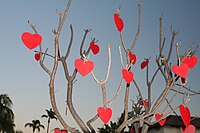 February events:
|
Disambiguation link notification for February 1
An automated process has detected that when you recently edited Te Waka Toi awards, you added a link pointing to the disambiguation page Fred Graham (check to confirm | fix with Dab solver).
(Opt-out instructions.) --DPL bot (talk) 09:28, 1 February 2019 (UTC)
This Month in GLAM: January 2019
| ||||||
barnstar

|
||
| Happy Adrianne Wadewitz award I keep looking around for Adrianne Wadewitz ; and you are her ! |
could not think of a better editor.[1] cheers. Nelliejellie (talk) 19:27, 11 February 2019 (UTC)
March 2019 at Women in Red

 Please join us for these virtual events:
| ||
|
|
This Month in GLAM: February 2019
| ||||||
April 2019 at Women in Red

|
--Rosiestep (talk) 18:12, 27 March 2019 (UTC) via MassMessaging
This Month in GLAM: March 2019
| ||||||
Disambiguation link notification for April 26
Hi. Thank you for your recent edits. An automated process has detected that when you recently edited Pyroderces apparitella, you added a link pointing to the disambiguation page Francis Walker (check to confirm | fix with Dab solver). Such links are usually incorrect, since a disambiguation page is merely a list of unrelated topics with similar titles. (Read the FAQ • Join us at the DPL WikiProject.)
It's OK to remove this message. Also, to stop receiving these messages, follow these opt-out instructions. Thanks, DPL bot (talk) 09:06, 26 April 2019 (UTC)
- Sorted. Ambrosia10 (talk) 18:57, 26 April 2019 (UTC)
May you join this month's editathons from WiR!

|
--Megalibrarygirl (talk) 16:16, 27 April 2019 (UTC) via MassMessaging
This Month in GLAM: April 2019
| ||||||
A cookie for you!

|
thanks for the work here Stuartyeates (talk) 21:54, 11 May 2019 (UTC) |
June events with WIR

|
--Megalibrarygirl (talk) 17:41, 22 May 2019 (UTC) via MassMessaging
Disambiguation link notification for May 25
An automated process has detected that when you recently edited Callipyrga turrita, you added a link pointing to the disambiguation page Edward Newman (check to confirm | fix with Dab solver).
(Opt-out instructions.) --DPL bot (talk) 09:01, 25 May 2019 (UTC)
- Checked, all ok. Ambrosia10 (talk) 17:27, 25 May 2019 (UTC)
May 2019 Tree of Life Newsletter
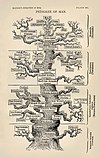
- May 2019—Issue 002
- Tree of Life
- Welcome to the Tree of Life newsletter!
|
|
|
|
- Fundamental changes being discussed at WikiProject Biology
On 23 May, user Prometheus720 created a talk page post, "Revamp of Wikiproject Biology--Who is In?". In the days since, WP:BIOL has been bustling with activity, with over a dozen editors weighing in on this discussion, as well as several others that have subsequently spawned. An undercurrent of thought is that WP:BIOL has too many subprojects, preventing editors from easily interacting and stopping a "critical mass" of collaboration and engagement. Many mergers and consolidations of subprojects have been tentatively listed, with a consolidation of WikiProjects Genetics + Molecular and Cell Biology + Computational Biology + Biophysics currently in discussion. Other ideas being aired include updating old participants lists, redesigning project pages to make them more user-friendly, and clearly identifying long- and short-term goals.
- Editor Spotlight: These editors want you to write about dinosaurs
Editors FunkMonk and Jens Lallensack had a very fruitful month, collaborating to bring two dinosaur articles to GA and then nominating them both for FA. They graciously decided to answer some questions for the first ToL Editor Spotlight, giving insight to their successful collaborations, explaining why you should collaborate with them, and also sharing some tidbits about their lives off-Wikipedia.
1) Enwebb: How long have you two been collaborating on articles?
- Jens Lallensack: I started in the German Wikipedia in 2005 but switched to the English Wikipedia because of its very active dinosaur project. My first major collaboration with FunkMonk was on Heterodontosaurus in 2015.
- FunkMonk: Yeah, we had interacted already on talk pages and through reviewing each other's articles, and at some point I was thinking of expanding Heterodontosaurus, and realised Jens had already written the German Wikipedia version, so it seemed natural to work together on the English one. Our latest collaboration was Spinophorosaurus, where by another coincidence, I had wanted to work on that article for the WP:Four Award, and it turned out that Jens had a German book about the expedition that found the dinosaur, which I wouldn't have been able to utilise with my meagre German skills. Between those, we also worked on Brachiosaurus, a wider Dinosaur Project collaboration between several editors.
2) Enwebb: Why dinosaurs?
- JL: Because of the huge public interest in them. But dinosaurs are also highly interesting from a scientific point of view: key evolutionary innovations emerged within this group, such as warm-bloodedness, gigantism, and flight. Dinosaur research is, together with the study of fossil human remains, the most active field in paleontology. New scientific techniques and approaches tend to get developed within this field. Dinosaur research became increasingly interdisciplinary, and now does not only rely on various fields of biology and geology, but also on chemistry and physics, among others. Dinosaurs are therefore ideal to convey scientific methodology to the general public.
- FM: As outlined above, dinosaurs have been described as a "gateway to science"; if you learn about dinosaurs, you will most likely also learn about a lot of scientific fields you would not necessarily be exposed to otherwise. On a more personal level, having grown up with and being influenced by various dinosaur media, it feels pretty cool to help spread knowledge about these animals, closest we can get to keeping them alive.
3) Enwebb: Why should other editors join you in writing articles related to paleontology? Are you looking to attract new editors, or draw in experienced editors from other areas of Wikipedia?
- JL: Because we are a small but active and helpful community. Our Dinosaur collaboration, one of the very few active open collaborations in Wikipedia, makes high-level writing on important articles easier and more fun. Our collaboration is especially open to editors without prior experience in high-level writing. But we do not only write articles: several WikiProject Dinosaur participants are artists who do a great job illustrating the articles, and maintain an extensive and very active image review system. In fact, a number of later authors started with contributing images.
- FM: Anyone who is interested in palaeontology is welcome to try writing articles, and we would be more than willing to help. I find that the more people that work on articles simultaneously with me, the more motivation I get to write myself. I am also one of those editors who started out contributing dinosaur illustrations and making minor edits, and only began writing after some years. But when I got to it, it wasn't as intimidating as I had feared, and I've learned a lot in the process. For example anatomy; if you know dinosaur anatomy, you have a very good framework for understanding the anatomy of other tetrapod animals, including humans.
4) Enwebb: Between the two of you, you have over 300 GA reviews. FunkMonk, you have over 250 of those. What keeps you coming back to review more articles?
- FM: One of the main reasons I review GANs is to learn more about subjects that seem interesting (or which I would perhaps not come across otherwise). There are of course also more practical reasons, such as helping an article on its way towards FAC, to reduce the GAN backlog, and to "pay back" when I have a nomination up myself. It feels like a win-win situation where I can be entertained by interesting info, while also helping other editors get their nominations in shape, and we'll end up with an article that hopefully serves to educate a lot of people (the greater good).
- JL: Because I enjoy reading Wikipedia articles and like to learn new things. In addition, reviews give me the opportunity to have direct contact with the authors, and help them to make their articles even better. This is quite rewarding for me personally. But I also review because I consider our GA and FA system to be of fundamental importance for Wikipedia. When I started editing Wikipedia (the German version), the article promotion reviews motivated me and improved my writing skills a lot. Submitting an article for review requires one to get serious and take additional steps to bring the article to the best quality possible. GAs and FAs are also a good starting point for readers, and may motivate them to become authors themselves.
5) Enwebb: What are your editing preferences? Any scripts or gadgets you find invaluable?
- FM: One script that everyone should know about is the duplink highlight tool. It will show duplinks within the intro and body of a given article separately, and it seems a lot of people still don't know about it, though they are happy when introduced to it. I really liked the citationbot too (since citation consistency is a boring chore to me), but it seems to be blocked at the moment due to some technical issues.
- JL: I often review using the Wikipedia Beta app on my smartphone, as it allows me to read without needing to sit in front of the PC. For writing, I find the reference management software Zotero invaluable, as it generates citation templates automatically, saving a lot of time.
- Editor's note: I downloaded Zotero and tried it for the first time and think it is a very useful tool. More here.
6) Enwebb: What would surprise the ToL community to learn about your life off-wiki?
- FM: Perhaps that I have no background in natural history/science, but work with animation and games. But fascination with and knowledge of nature and animals is actually very helpful when designing and animating characters and creatures, so it isn't that far off, and I can actually use some of the things I learn while writing here for my work (when I wrote the Dromaeosauroides article, it was partially to learn more about the animal for a design-school project).
- JL: That I am actually doing research on dinosaurs. Though I avoid writing about topics I publish research on, my Wikipedia work helps me to keep a good general overview over the field, and quite regularly I can use what I learned while writing for Wikipedia for my research.
Get in touch with these editors regarding collaboration at WikiProject Dinosaurs!
- Marine life continues to dominate ToL DYKs
|
You are receiving this because you added your name to the subscribers list of the WikiProject Tree of Life. If you no longer wish to receive the newsletter, please remove your name.
Sent by DannyS712 (talk) using MediaWiki message delivery (talk) at 03:44, 4 June 2019 (UTC)
This Month in GLAM: May 2019
| ||||||
Andrew Leachman's wikipage
Hi Siobhan Thank you for your comments. I really enjoyed "meeting" your father Andrew Leachman. I also want to acknowledge Mary Newman, Gertrude206, who was immensely helpful to me and continues to tutor me in this new adventure! --Noracrentiss (talk) 22:43, 21 June 2019 (UTC)
July events from Women in Red!

|
--Megalibrarygirl (talk) 16:39, 25 June 2019 (UTC) via MassMessaging
Kia ora!
Thanks for the welcome. This is a good prompt for me to crack on.... I'd like to get to the point where doing this is as natural as sending a text. Barbaliciousnz (talk) 23:21, 26 June 2019 (UTC)
- Barbuliscious, Just to let you know I've found a couple of digital resources that may be of assistance any Dowse work - there's this book and this list from a thesis. I know the latter concentrate on printmakers but I'm finding a lot of the women listed also did crafts as well. Anyway, I thought I'd share the links. I hope you can make it to the Archives editathon as that will really help you increase your skills. But picking an existing article about any of the women listed in that first book I've mentioned and then expanding the content of the article with any information found in there and citing it as a reference would be a great way to start getting your edit count up. I know I'm probably telling you how to suck eggs (so to speak) but be careful to make sure you add the information in your own words but reference it with the book citation. Hope this helps! Ambrosia10 (talk) 23:46, 26 June 2019 (UTC)
Page parameter
Kia ora, Siobhan. Regarding this edit, please allow me to point out that this detail (pages=316) is probably based on a misunderstanding. What goes into that field is the page reference that this citation refers to. It is *not* meant to give the number of pages of a document. So it was either meant to be page=316 (i.e. singular; you wanted to point to that page), or pages=316–? (i.e. you wanted to point to a range of pages), or should be page=? (i.e. singular; you want to point to a specific page yet to be specified). Any questions please ask. Schwede66 22:55, 27 June 2019 (UTC)
- Schwede66, Thanks for the guidance. I very much appreciate the correction. I've looked at that edit and it appears I used the visual editor citoid tool to generate that reference. I believe I added (or at least intended to add) the 316 in the "cited page(s)" box provided by citoid tool to generate reference as that was the page I was wanting to point to in the reference. If the citoid tool asking me to fill in an incorrect field? I had assumed that "page(s)" implies it would be ok to put in either a page or a range. I'm happy to try to remember to manually edit the citoid tool to find the "page" field singular when adding a single page citation. Ambrosia10 (talk) 01:06, 28 June 2019 (UTC)
- Oh, that's bad of the tool. Yes, you'd have to manually change it to singular if that is what the tool does. Otherwise, with such a high page number, everybody would think that you've used the total number of pages with this field. Schwede66 03:59, 28 June 2019 (UTC)
June 2019 Tree of Life Newsletter

- June 2019—Issue 003
- Tree of Life
- Welcome to the Tree of Life newsletter!
|
|
|
|
| Project name | Relative WikiWork |
|---|---|
| Cats | 4.79
|
| Fisheries and fishing | 4.9
|
| Dogs | 4.91
|
| Viruses | 4.91
|
| ToL | 4.94
|
| Cetaceans | 4.97
|
| Primates | 4.98
|
| Sharks | 5.04
|
| All wikiprojects average | 5.05
|
| Dinosaurs | 5.12
|
| Equine | 5.15
|
| Bats | 5.25
|
| Mammals | 5.32
|
| Aquarium fishes | 5.35
|
| Hypericaceae | 5.38
|
| Turtles | 5.4
|
| Birds | 5.46
|
| Australian biota | 5.5
|
| Marine life | 5.54
|
| Animals | 5.56
|
| Paleontology | 5.57
|
| Rodents | 5.58
|
| Amphibians and Reptiles | 5.64
|
| Fungi | 5.65
|
| Bivalves | 5.66
|
| Plants | 5.67
|
| Algae | 5.68
|
| Arthropods | 5.69
|
| Hymenoptera | 5.72
|
| Microbiology | 5.72
|
| Cephalopods | 5.74
|
| Fishes | 5.76
|
| Ants | 5.79
|
| Gastropods | 5.8
|
| Spiders | 5.86
|
| Insects | 5.9
|
| Beetles | 5.98
|
| Lepidoptera | 5.98
|
- Spineless editors overwhelmed by stubs
Within the Tree of Life and its many subprojects, there is an abundance of stubs. Welcome to Wikipedia, what's new, right? However, based on all wikiprojects listed (just over two thousand), the Tree of Life project is worse off in average article quality than most. Based on the concept of relative WikiWork (the average number of "steps" needed to have a project consisting of all featured articles (FAs), where stub status → FA consists of six steps), only seven projects within the ToL have an average rating of "start class" or better. Many projects, particularly those involving invertebrates, hover at an average article quality slightly better than a stub. With relative WikiWorks of 5.98 each, WikiProject Lepidoptera and WikiProject Beetles have the highest relative WikiWork of any project. Given that invertebrates are incredibly speciose, it may not surprise you that many articles about them are lower quality. WikiProject Beetles, for example, has over 20 times more articles than WikiProject Cats. Wikipedia will always be incomplete, so we should take our relatively low WikiWork as motivation to write more articles that are also better in quality.
- Editor Spotlight: Showing love to misfit taxa
We're joined for this month's Editor Spotlight by NessieVL, a long-time contributor who lists themselves as a member of WikiProject Fungus, WikiProject Algae, and WikiProject Cephalopods.
1) Enwebb: How did you come to edit articles about organisms and taxonomic groups?
- Nessie: The main force, then and now, driving me to create or edit articles is thinking "Why isn't there an article on that on Wikipedia?" Either I'll read about some rarely-sighted creature in the deep sea or find something new on iNaturalist and want to learn more. First stop (surprise!) is Wikipedia, and many times there is just a stub or no page at all. Sometimes I just add the source that got me to the article, not sometimes I go deep and try to get everything from the library or online journals and put it all in an article. The nice thing about taxa is the strong precedent that all accepted extant taxa are notable, so one does not need to really worry about doing a ton of research and having the page get removed. I was super worried about this as a new editor: I still really dislike conflict so if I can avoid it I do. Anyway, the most important part is stitching an article in to the rest of Wikipedia: Linking all the jargon, taxonomers, pollinators, etc., adding categories, and putting in the correct WikiProjects. Recently I have been doing more of the stitching-in stuff with extant articles. The last deep-dive article I made was Karuka at the end of last year, which is a bit of a break for me. I guess it's easier to do all the other stuff on my tablet while watching TV.
2) Enwebb: Many editors in the ToL are highly specialized on a group of taxa. A look at your recently created articles includes much diversity, though, with viruses, bacteria, algae, and cnidarians all represented—are there any commonalities for the articles you work on? Would you say you're particularly interested in certain groups?
- Nessie: I was a nerd from a time when that would get you beat up, so I like odd things and underdogs. I also avoid butting heads, so not only do I find siphonophores and seaweeds fascinating I don't have to worry about stepping on anyone's toes. I go down rabbitholes where I start writing an article like Mastocarpus papillatus because I found some growing on some rocks, then in my research I see it is parasitized by Pythium porphyrae, which has no article, and how can that be for an oomycete that oddly lives in the ocean and also attacks my tasty nori. So then I wrote that article and that got me blowing off the dust on other Oomycota articles, encouraged by the pull of propagating automatic taxoboxes. Once you've done the taxonomy template for the genus, well then you might as well do all the species now that the template is taken care of for them too. and so on until I get sucked in somewhere else. I think it's good to advocate for some of these 'oddball' taxa as it makes it easier for editors to expand their range from say plants to the pathogenic microorganisms of their favorite plant.
- My favorite clades though, It's hard to pick for a dilettante like me. I like working on virus taxonomy, but I can't think of a specific virus species that I am awed by. Maybe Tulip breaking virus for teaching us economics or Variola virus for having so many smallpox deities, one of which was popularly sung about by Desi Arnaz and then inspired the name of a cartoon character who was then misremembered and then turned into a nickname for Howard Stern's producer Gary Dell'Abate. Sorry, really had to share that chain, but for a species that's not a staple food it probably has the most deities. But anyway, for having the most species that wow me, I love a good fungus or algae, but that often is led by my stomach. Also why I seem to research so many plant articles. You can't eat siphonophores, at least I don't, but they are fascinating with their federalist colonies of zooids. Bats are all amazing, but the task force seems to have done so much I feel the oomycetes and slime moulds need more love. Same thing with dinosaurs (I'm team Therizinosaurus though). But honestly, every species has that one moment in the research where you just go, wow, that's so interesting. For instance, I loved discovering that the picture-winged fly (Delphinia picta) has a mating dance that involves blowing bubbles. Now I keep expecting them to show me when they land on my arm, but no such luck yet.
3) Enwebb: I noticed that many of your recent edits utilize the script Rater, which aids in quickly reassessing the quality and importance of an article. Why is it important to update talk page assessments of articles? I also noticed that the quality rating you assign often aligns with ORES, a script that uses machine-learning to predict article quality. Coincidence?
- Nessie: I initially started focusing on WikiProject talk page templates because they seem to be the key to data collecting and maintenance for articles, much more so than categories. This is where you note of an article needs an image, or audio, or a range map. It's how the cleanup listing bot sorts articles, and how Plantdrew does his automated taxobox usage stats. The latter inspired me to look for articles on organisms that are not assigned to any ToL WikiProjects which initially was in the thousands. I got it down to zero with just copypasta so you can imagine I was excited when I saw the rater tool. Back then I rated everything stub/low because it was faster: I couldn't check every article for the items on the B-class checklists. Plus each project has their own nuances to rating scales and I thought the editors in the individual projects would take it from there. I also thought all species were important, so how can I choose a favorite? Now it is much easier with the rater tool and the apparent consensus with Abductive's method of rating by the pageviews (0-9 views/day is low, 10-99 is med, 100-999 is high...). For the quality I generally go by the ORES rating, you caught me. It sometimes is thrown off by a long list of species or something, but it's generally good for stub to C: above that needs formal investigation and procedures I am still learning about. It seems that in the ToL projects we don't focus so much on getting articles to GA/FA so it's been harder to pick up. It was a little culture shock when I went on the Discord server and it seemed everyone was obsessed with getting articles up in quality. I think ToL is focusing on all the missing taxa and (re)organizing it all, which when you already have articles on every anime series or whatever you can focus on bulking the articles up more. In any event, on my growing to-do list is trying to get an article up to FA or GA and learn the process that way so I can better do the quality ratings and not just kick the can down the road.
4) Enwebb: What, if anything, can ToL and its subprojects do to better support collaboration and coordination among editors? How can we improve?
- Nessie: I mentioned earlier that the projects are the main way maintenance is done. And it is good that we have a bunch of subprojects that let those tasks get broken up into manageable pieces. Frankly I'm amazed anything gets done with WikiProject Plants with how huge its scope is. Yet this not only parcels out the work but the discussion as well. A few editors like Peter coxhead and Plantdrew keep an eye on many of the subprojects and spread the word, but it's still easy for newer editors to get a little lost. There should be balance between the lumping and splitting. The newsletter helps by crossing over all the WikiProjects, and if the discord channel picked up that would help too. Possibly the big Enwiki talk page changes will help as well.
5) Enwebb: What would surprise the ToL community to learn about your life off-Wikipedia?
- Nessie: I'm not sure anything would be surprising. I focus on nature offline too, foraging for mushrooms or wild plants and trying to avoid ticks and mosquitos. I have started going magnet fishing lately, more to help clean up the environment than in the hopes of finding anything valuable. But it would be fun to find a weapon and help solve a cold case or something.
- June DYKs
|
You are receiving this because you added your name to the subscribers list of the WikiProject Tree of Life. If you no longer wish to receive the newsletter, please remove your name.
sent by ZLEA via MediaWiki message delivery (talk) 20:29, 3 July 2019 (UTC)
This Month in GLAM: June 2019
| ||||||
A goat for you!

Thanks for helping with the Listener :)
Blueskinbay (talk) 02:02, 27 July 2019 (UTC)
Thanks heaps!
We so appreciate your help today. from Virginia Larson, Joanna Wane and Jenny Nicholls at North & South Tahatai (talk) 03:28, 27 July 2019 (UTC)
Great Hedda Dyson image!
Tahatai (talk) 22:00, 27 July 2019 (UTC)
August 2019 at Women in Red

|
--Rosiestep (talk) 06:43, 29 July 2019 (UTC) via MassMessaging
Tree of Life Newsletter

- July 2019—Issue 004
- Tree of Life
- Welcome to the Tree of Life newsletter!
|
|
|
|
|
The WikiCup, an annual editing competition, is now in its fourth round. Casliber, consistent participant since 2010 and winner in 2016, is currently dominating Group A with 601 points. Largely responsible is the successful Featured Article nomination of Masked booby. The other remaining Tree of Life participant, Enwebb, is participating in her first ever WikiCup. In this round, she has a grand total of...5 points. But with the recent Featured Article nomination of Megabat, she stands to gain 600 points if successful. As it stands, though, it appears that at least one ToL editor is headed to the fifth and final round of 8 contestants, which begins September 1. Thus far, all participants in the WikiCup have generated 17 Featured Articles, 116 Good Articles, 16 Featured Lists, and 57 Featured Pictures. The Good Article Nominations backlog has been reduced as well, with 286 Good Article Reviews. |
|
For this month's editor spotlight we're joined by Charlesjsharp, a longtime contributor to Wikimedia Commons with a plethora of featured pictures on English Wikipedia. 1) Starsandwhales: How long have you been editing Wikipedia, and how did you get interested? How did you begin your journey of photographing wildlife?
 2) S&W: Over the years, you've taken photos of many different organisms from birds to insects to big cats; you have an extensive list of favorite images. Which animals have been the most exciting for you to photograph?
3) S&W: Many articles under ToL have requests for people to add images that can go unanswered. What can the community do to improve the coverage of different organisms on Wikipedia, especially when it comes to images?

4) S&W: What advice would you give to people new to photographing wildlife?
5) S&W: What would the Tree of Life community be surprised to learn about your life off-wiki?
* An example of cumbersome code: getting the layout of my responses to your questions. So dated, and no online spellchecker. |
|
You are receiving this because you added your name to the subscribers list of the WikiProject Tree of Life. If you no longer wish to receive the newsletter, please remove your name.
Sent by ZLEA via MediaWiki message delivery (talk) 18:59, 1 August 2019 (UTC)
Location for next Wellington Meetup
Kia ora, I'm letting all those that have attended during last few Wellington meet ups know that the location for the next two meet ups has changed. The location for the Wellington Meetup 17 August 2019 and Wellington Meetup 31 August 2019 is now in the Alexander Turnbull Library Reading Room, Level 1, National Library. The National Library net.work space area will be closed for building work from 12 August. See the meet up pages for more information. Looking forward to seeing you there. Einebillion (talk) 04:49, 3 August 2019 (UTC)
This Month in GLAM: July 2019
| ||||||
Welcome to AWHI!
So glad you were able to "attend" the Wikimania session and that you're interested in partnering in the gender representation work. #LetsDoThis — Preceding unsigned comment added by Digitaleffie (talk • contribs) 06:14, 17 August 2019 (UTC)
September 2019 at Women in Red

|
--Rosiestep (talk) 16:23, 27 August 2019 (UTC) via MassMessaging
August 2019 Tree of Life Newsletter

- August 2019—Issue 005
- Tree of Life
- Welcome to the Tree of Life newsletter!
|
|
|
|
  Guest column by Thomas Shafee (Evolution and evolvability), Editor in Chief of WikiJournal of Science
Firstly, WikiJSci can be a complementary system for FA review (getting external review, input, and validity). When an Wikipedia article is nominated (via WP:JAN), journal editors go out to non-Wikipedian academics and researchers who have published on the subject on the last five years and invite them to give feedback comments (e.g. Peripatric speciation and Baryonyx). The resulting changes can then be integrated back into the Wikipedia article.
Getting more editors involved in Wikipedia is always a high priority. WikiJSci can also be a way to encourage new people to contribute articles (especially on missing/stub/start topics). An example of an article that was written from scratch by a group of non-Wikipedians is Teladorsagia circumcincta. This not only resulted in a new Wikipedia page on an underdeveloped topic, but introduced the idea of Wikimedia contribution to a group of people who had previously never considered it.
The journal can be a way to get multimedia content reviewed or encourage contribution. The same approach could be easily adapted to sounds (e.g. frog mating calls) or videos (e.g. starfish feet motion). It also allows for tracking of those images in new articles via Altmetric (this example has >200, which is bananas). There aren't any biology examples in WikiJSci yet, but the sister medical journal has published a few summary diagrams, photography, and image galleries. Examples include this gallery by Blausen Medical or the diagram of cell disassembly during apoptosis.
For those interested in other Wikimedia sister projects, there's also broad scope for interactions with the WikiJournals. Perhaps peer reviewed teaching resources could be useful to sit alongside sets of Wikipedia articles and be integrated into Wikiversity courses (like this or this)? Can sections of Wikidata & Wikispecies be peer reviewed? What are the potential avenues for integration with WikiCite, WikiFactMine, Scholia, etc.? Currently, WikiJSci is aiming to be very flexible and try out different formats so long as they can be externally peer reviewed. For more info, see the 2019-06-30 Signpost article and the current sister project proposal. |
|
1) Enwebb: You're very prolific with DYKs, with over 2,000 nominations credited (in fact, I'll highlight which DYK nominations this month were yours below). What made you become so involved in this part of Wikipedia? Why should Tree of Life editors nominate articles for DYK?
2) Enwebb: I noticed that your DYK nominations reflect a diverse array of flora and fauna, from trees, marine invertebrates, birds, fishes, and mammals. How do you decide what to work on?
3) Enwebb: Which of your Wikipedia accomplishments are you most proud of?
4) Enwebb: What motivates you to keep contributing? What's your 10,000 ft view (pardon the non-SI) of the community and Tree of Life?
6) Enwebb: How did you first become interested in natural history?
|
|
You are receiving this because you added your name to the subscribers list of the WikiProject Tree of Life. If you no longer wish to receive the newsletter, please remove your name.
Sent by ZLEA via MediaWiki message delivery (talk) at 15:43, 1 September 2019 (UTC)
This Month in GLAM: August 2019
| ||||||
October Events from Women in Red

|
--Megalibrarygirl (talk) 17:34, 23 September 2019 (UTC) via MassMessaging
Wiki event - Dowse Nov 16
Novice comms from me... I have messaged you via FB with link to wiki dowse event. Can yu please take a look and see if that reads ok.
user:barbuliscious 24/09/2019 Barbuliscious (talk) 22:19, 23 September 2019 (UTC)
September 2019 Tree of Life Newsletter

- September 2019—Issue 006
- Tree of Life
- Welcome to the Tree of Life newsletter!
|
|
|
|
|
|
5
10
15
20
'02
'04
'06
'08
'10
'12
'14
'16
'18
Tree of Life subprojects and task forces by start year and whether currently considered active or not This month saw a vanishingly rare occurrence for the Tree of Life: a new WikiProject joined the fold. WikiProject Diptera, however, is also unusual in being a classroom project. Whether or not this project will stay active once the semester ends remains to be seen. It does not bode well, however, that WP:WikiProject Vespidae—a creation from the same instructor at St. Louis University—faded to obscurity shortly after the fall semester concluded in 2014. WikiProject Vespidae is defunct and now redirects to the Hymenoptera task force of WikiProject Insects. Since 2014, the Tree of Life has seen a string of years where one or zero projects or task forces were created. The only projects and task forces created since then are WikiProject Animal anatomy (2014), Hymenoptera task force (2016), Bats task force (2017), WikiProject Hypericaceae (2018), and now WikiProject Diptera (2019). The year 2006 saw the greatest creation of WikiProjects and task forces, with fourteen still active and the remaining six as "semiactive", "inactive", or "defunct". |
|
You are receiving this because you added your name to the subscribers list of the WikiProject Tree of Life. If you no longer wish to receive the newsletter, please remove your name.
Sent by ZLEA via MediaWiki message delivery (talk) at 22:26, 1 October 2019 (UTC)
This Month in GLAM: September 2019
| ||||||
Photo of Tracey Tawhiao
I think I just successfully inserted a photo of TT. I asked her for one this morning stating it would need to be available on Creative Commons. I also have received a list of artists from the Dowse they would like to focus on for the wiki event. I popped the wiki event up on FB NZ wiki and over the next few weeks I am going to put in some pics of the artists work in the event page to make it more engaging. 18 Oct 2019 Barbuliscious (talk) 23:00, 17 October 2019 (UTC)
- (page stalker comment) @Barbuliscious: It's not as easy as that. It doesn't say who took the photo and that person would usually hold the copyright. It is usually the photographer who can release a photo under a free license. Schwede66 03:13, 18 October 2019 (UTC)
Ah too good to be true. I think it was a selfie by Tracey - I'll go back to her. Barbuliscious (talk) 03:35, 18 October 2019 (UTC) 18 October 2019
November 2019 at Women in Red

|
--Rosiestep (talk) 22:57, 29 October 2019 (UTC) via MassMessaging
October 2019 Tree of Life Newsletter

- October 2019—Issue 007
- Tree of Life
- Welcome to the Tree of Life newsletter!
|
|
|
|
|
|
By request from another editor, this month I wrote an overview of ways that content is featured on Wikipedia. Below I have outlined some of the processes for getting content featured: Did You Know (DYK)What is it: A way for articles to appear on the main page of Wikipedia. A short hook in the format of "Did you know...that ___" presents unusual and interesting facts to the reader, hopefully making the reader want to click through to the article How it works: The DYK process has fairly low barriers for participation. The eligibility criteria are few and relatively easy to meet. Some important guidelines:
The process for creating the nomination is somewhat tedious. Instructions can be found here (official instructions) and here ("quick and nice" guide to DYK). Experience is the best teacher here, so don't be afraid to try and fail a few times. The last few DYK nominations I've done, however, have been with the help of SD0001's DYK-helper script, which makes the process a bit more streamlined (you create the template from a popup box on the article; created template is automatically transcluded to nominations page and article talk page) Once your nomination is created and transcluded, it will need to be reviewed. The reviewer will check that the article meets the eligibility criteria, that the hook is short enough, cited, and interesting, and that other requirements are met, such as for images. If you've been credited with more than 5 DYKs, the reviewer will also check that you've reviewed someone else's nomination for each article that you nominate. This is called QPQ (quid pro quo). You can check how many credited DYKs you've had here to see if QPQ is required for you to nominate an article for DYK. Good Article (GA)What it is: A peer review process to determine that an article meets a set of criteria. This adds a How it works: You follow the instructions to nominate an article, placing a template on its talk page. Anyone can nominate an article—you don't have to be a major contributor, though it is considered polite to inform the major contributors that you are nominating the article. The article is added to a queue to await a review. In the ToL, it seems that reviews happen pretty quickly, thanks to our dedicated members. Once the review begins, the reviewer will offer suggestions to help the article meet the 6 GA criteria. Upon addressing all concerns, the reviewer will pass the article, and voilà! Good Article! Advice to a first-time nominator: Look at other Good Articles in related areas before nominating. If you're unsure about nominating, consider posting to the talk page of your project to see what other editors think. You can also have a more experienced editor co-nominate the article with you. Featured Article (FA)What it is: An exhaustive peer review to determine that an articles meets the criteria. This adds a How it works: You follow the instructions to nominate an article, placing a template on its talk page. Nominated articles are usually GAs already. Uninvolved editors can nominate, though the article's regular editors should be consulted first. Several editors will come by offering feedback, eventually supporting or opposing promotion to FA. A coordinator will determine if there is consensus to promote the article to FA. For an editor's first FA, spot checks to verify that the sources support the text are conducted. Advice to a first-time nominator: The Featured Article Candidate (FAC) process is a bit intimidating, but several steps can make your first one easier (speaking as someone who has exactly one). If you also did the GA nomination of the article, you can ask the reviewer for "extra" feedback beyond the GA criteria. You can also formally request a peer review and/or a copy edit from the Guild of Copy Editors to check for content and mechanics. First-time nominators are encouraged to seek the help of a mentor for a higher likelihood of passing their first FAC. Good and Featured Topics (GT and FT)What it is: It took me a while to realize we even had GT and FT on Wikipedia, as they are not very common relative to GA and FA. Both GT and FT are collections of related articles of high quality (all articles at GA or FA, all lists at Featured List). GT/FT have to be at least 3 articles with no obvious gaps in coverage of the topic, along with other criteria. For GT, all articles have to be GA quality and all lists must be FL. For FT, at least half the articles must be FA or FL, with the remaining articles at GA. How it works: Follow the nomination procedures for creating a new topic or adding an article to an existing topic. Other editors weigh in to support or oppose the proposal. Coordinators determine if there is consensus to promote to GT/FT. Advice to a first-time nominator: There are very few GT/FT in Tree of Life (5 GT and 11 FT). Most of the legwork appears to be improving a cohesive set of articles to GA/FA. |
|
You are receiving this because you added your name to the subscribers list of the WikiProject Tree of Life. If you no longer wish to receive the newsletter, please remove your name.
Delivered by MediaWiki message delivery (talk) at 03:34, 3 November 2019 (UTC) on behalf of DannyS712 (talk)
This Month in GLAM: October 2019
| ||||||
An NZ threatened species
Hi @Ambrosia10: I had a crack at Carex albula, but as you can see I have failed to get the conservation status_system correct. I am hoping you can fix this. (In the meantime I have asked the keepers of the taxonbar to include NZPCN ids in it, to make life easier. So hopefully that will be up and running for the edit-a-thon. Cheers, MargaretRDonald (talk) 00:02, 15 November 2019 (UTC)
- Hi MargaretRDonald, I've corrected to markup to show the NZ conservation status of the plant. It was a relatively easy fix but for the future the method I use to remember what markup to use is as follows. If you look at the diagram commons category you can see the current template images, click on the appropriate one which will then take you to the image with instances of the use. Use those examples to give the appropriate markup to use in the infoboxes. Thanks also for suggesting the inclusion of the NZPCN in the taxonbar as that's a great idea! Ambrosia10 (talk) 01:05, 15 November 2019 (UTC)
- Thank you, very much. (I might almost be set for this thing). MargaretRDonald (talk) 01:08, 15 November 2019 (UTC)
- Had a crack at Carex berggrenii which is Dec under NZTCS. But neither D nor Dec worked for me when trying to get the status system going - despite checking out the diagram commons category which seemed to suggest D... Am hoping you can work your magic for me again. Cheers, MargaretRDonald (talk) 06:47, 15 November 2019 (UTC)
- MargaretRDonald, I've just had an attempt at using this with no luck! I too am a bit stumped as to what is going on. BUT, I've got an editathon today with Giantflightlessbirds who updated these so hopefully he can fix the issue. It must have an error or omission as no one appears to have used this status on an article. Thanks for discovering this before the editathon! - 17:22, 15 November 2019 (UTC)
- It looks like only some statuses are implemented in {{Taxobox/species}} for NZTCS. The syntax to extend it looks quite straightforward, but although I have the permissions to edit it I don't have much experience of complex templates, and the consequences of getting it wrong are dire as this template will be indirectly used in hundreds of thousands of articles. If @Giantflightlessbirds: isn't available, I suggest you ask someone with the template editor permission (see the list) to add which statuses make sense to you - at least the "D" status which should link to File:Status NZTCS D.svg with a status description of "Declining".-gadfium 03:47, 16 November 2019 (UTC)
- Yes, we need someone to rewrite the template to replace the old RR, Sp, GD, and DD categories with the new NU, Rel, R, and D. The table on File:Status NZTCS D.svg lays it all out. I've created all the graphics but don't know anything about template code. I'll ask someone from the Template Editor list to help out. —Giantflightlessbirds (talk) 07:31, 16 November 2019 (UTC)
- Thanks for the update, @Giantflightlessbirds: (and the fact that it is now working). MargaretRDonald (talk) 20:08, 18 November 2019 (UTC)
- Yes, we need someone to rewrite the template to replace the old RR, Sp, GD, and DD categories with the new NU, Rel, R, and D. The table on File:Status NZTCS D.svg lays it all out. I've created all the graphics but don't know anything about template code. I'll ask someone from the Template Editor list to help out. —Giantflightlessbirds (talk) 07:31, 16 November 2019 (UTC)
- Had a crack at Carex berggrenii which is Dec under NZTCS. But neither D nor Dec worked for me when trying to get the status system going - despite checking out the diagram commons category which seemed to suggest D... Am hoping you can work your magic for me again. Cheers, MargaretRDonald (talk) 06:47, 15 November 2019 (UTC)
- Thank you, very much. (I might almost be set for this thing). MargaretRDonald (talk) 01:08, 15 November 2019 (UTC)
ArbCom 2019 election voter message
December events with WIR

|
--Megalibrarygirl (talk) 18:42, 25 November 2019 (UTC) via MassMessaging
November 2019 Tree of Life Newsletter

- November 2019—Issue 008
- Tree of Life
- Welcome to the Tree of Life newsletter!
|
|
| News at a Glance |
|
| Class is in Session in the Tree of Life |
|
In an interesting turn of events, this month's guest column is by my alter-ego, Elysia (Wiki Ed): *Puts on Wiki Education hat* Hi everyone, I'm Elysia and I work for Wiki Education. You may know me as Enwebb. I got a request last month to let you know how Wiki Education is intersecting with the Tree of Life subprojects. As one of Wiki Education's major goals is to improve topics related to the sciences, leading to our Communicating Science initiative, we end up supporting quite a few in the biological sciences. Here are the TOL-related courses active this term: What is the impact of student editors in Tree of Life?  Altogether, these 16 courses have 347 student participants. As the end of the semester hasn't come yet, these numbers are still growing, but these students have:
Some of our best student work this semester (of any kind, not just biodiversity) has come from Agelaia's Behavioural Ecology course—you may remember this as the course that created WikiProject Diptera. The students have several Good Article nominations, including Dryomyza anilis, Anastrepha ludens, Aedes taeniorhynchus, Drosophila silvestris, Drosophila subobscura, and Ceratitis capitata. And while long-term participation from students is low, there's always the chance that we'll discover a Wikipedian. I had never edited before my Wikipedia assignment in 2017 and I'm still here nearly 20,000 edits later! After I poked around in the beginning of the semester, I had the realization that not many people write Wikipedia, and very few of those have a special interest in bats. If I didn't stick around to write the content, there was no guarantee that it would ever get done. Why are species articles suitable for students? Writing about taxonomic groups is a great fit for students, as it keeps them away from areas where new editors traditionally struggle. The notability policy is generous towards taxa, and there is little danger of a student's work getting removed for lack of notability; this is to be expected when students write biographies. Students may struggle with encyclopedic tone for biographies and stray towards promotional writing, but this is much less common when writing about a shrew or algae! Additionally, we're never going to run out of species to write about. Students have a bounty of stubs and redlinks to pick from. Creating a new article or expanding an existing one also takes a fairly predictable structure, with plenty of articles that students can model after. Don't students just create messes for volunteers to clean up? Our sincere hope is that, no, they don't, and we take several steps to try to minimize the burden on volunteer labor. With automatic plagiarism detection, alerts when students edit a Good or Featured Article, and notifications when students edit an article subject to discretionary sanctions, we try to stay ahead of problems as much as possible. We also review all student work at the end of each term. Ian, Shalor, and I are always happy to receive pings alerting us to student issues that need to be addressed. |
| November DYKs |
|
You are receiving this because you added your name to the subscribers list of the WikiProject Tree of Life. If you no longer wish to receive the newsletter, please remove your name.
This Month in GLAM: November 2019
| ||||||
January 2020 at Women in Red


|
December 2019 Tree of Life Newsletter

- December 2019—Issue 009
- Tree of Life
- Welcome to the Tree of Life newsletter!
|
|
|
|
| News at a Glance |
|
| Editor Spotlight: Plantdrew |
|
We're joined this month by long-time editor Plantdrew, who's currently engaged in streamlining the taxonomic structure of Wikipedia articles via the automated taxobox system. How did you become a Wikipedian? What are your particular interests (besides the obvious of "plants")?
What projects are keeping you busy around the 'pedia at present?
What's your favorite plant?
What's your background like? How did you come to have a special interest in biology?
What's something that would surprised TOL editors about your life off-wiki?
Anything else you'd like us to know?
|
| December DYKs |
|
You are receiving this because you added your name to the subscribers list of the WikiProject Tree of Life. If you no longer wish to receive the newsletter, please remove your name.
DYK for Atriplex hollowayi
On 7 January 2020, Did you know was updated with a fact from the article Atriplex hollowayi, which you recently created, substantially expanded, or brought to good article status. The fact was ... that the stems and leaves of the endangered Holloway's crystalwort look as if they are covered in sugar crystals? The nomination discussion and review may be seen at Template:Did you know nominations/Atriplex hollowayi. You are welcome to check how many page hits the article got while on the front page (here's how, Atriplex hollowayi), and it may be added to the statistics page if the total is over 5,000. Finally, if you know of an interesting fact from another recently created article, then please feel free to suggest it on the Did you know talk page.
Cas Liber (talk · contribs) 12:01, 7 January 2020 (UTC)
This Month in GLAM: December 2019
| ||||||
February with Women in Red


|
--Megalibrarygirl (talk) 19:30, 28 January 2020 (UTC) via MassMessaging
January 2020 Tree of Life Newsletter

- January 2020—Issue 010
- Tree of Life
- Welcome to the Tree of Life newsletter!
|
|
|
|
| News at a Glance |
|
| Vital Articles | ||||||||||||||||||||||||||||||||||||||||||||||||||||||||||||||||||||||||||||||||||||||||||||||||||
The vital articles project on English Wikipedia began in 2004 when an editor transferred a list from Meta-Wiki: List of articles every Wikipedia should have. The first incarnation of the list became what is now level 3. As of 2019, there are 5 levels of vital articles:
Each level is inclusive of all previous levels, meaning that the 1,000 Level 3 articles include those listed on Levels 2 and 1. Below is an overview of the distribution of vital articles, and the quality of the articles. While the ultimate goal of the vital articles project is to have Featured-class articles, I also considered Good Articles to be "complete" for the purposes of this list. Animals (1,148 designated out of projected 2,400)
Plants, fungi, and other organisms (510 designated out of projected 1,200)
Many articles have yet to be designated for Tree of Life taxonomic groups, with 1,942 outstanding articles to be added. Anyone can add vital articles to the list! Restructuring may be necessary, as the only viruses included as of yet are under the category "Health". The majority of vital articles needing improvement are level 5, but here are some outstanding articles from the other levels:
· Abiogenesis
· Sexual dimorphism |
| January DYKs |
|
You are receiving this because you added your name to the subscribers list of the WikiProject Tree of Life. If you no longer wish to receive the newsletter, please remove your name.
This Month in GLAM: January 2020
| ||||||
February 2020 Tree of Life Newsletter

- February 2020—Issue 011
- Tree of Life
- Welcome to the Tree of Life newsletter!
|
|
|
|
| News at a Glance |
|
| The spread of coronavirus across Wikipedia | ||||||||||||||||||||||||||||||||||||||||||||||||
|
With the outbreak of a novel coronavirus dominating news coverage, Wikipedia content related to the virus has seen much higher interest. Tree of Life content of particular interest to readers has included viruses, bats, pangolins, and masked palm civets. Viruses saw the most dramatic growth in readership: Coronavirus, which was the 105th most popular virus article in December 2019 with about 400 views per day, averaged over a quarter million views each day of January 2020. Total monthly viewership of the top-10 virus articles ballooned from about 1.5 million to nearly 20 million.
 From October 2019 – December 2019, the top ten most popular bat articles fluctuated among 16 different articles, with the December viewership of those 10 articles at 209,280. For January 2020, three articles broke into the top-10 that were not among the 16 articles of the prior three months: Bat as food, Horseshoe bat, and Bat-borne virus. Viewership of the top-10 bat articles spiked nearly 300% to 617,067 in January. While bats have been implicated as a possible natural reservoir of SARS-CoV-2, an intermediate host may be the bridge between bats and humans. Pangolins have been hypothesized as the intermediate host for the virus, causing a large spike in typical page views of 2-3k each day up to more than 60k in a day. Masked palm civets, the intermediate host of SARS, saw a modest yet noticeable spike in page views as well, from 100 to 300 views per day to as many as 5k views per day. With an increase in viewers came an increase in editors. In an interview, longtime virus editor Awkwafaba identified the influx of editors as the biggest challenge in editing content related to the coronavirus. They noted that these newcomers include "novices who make honest mistakes and get tossed about a bit in the mad activity" as well as "experienced editors who know nothing about viruses and are good researchers, yet aren't familiar with the policies of WP:ToL or WP:Viruses." Disruption also increased, with extended confirmed protection (also known as the 30/500 rule, which prevents editors with fewer than 30 days tenure and 500 edits from making edits and is typically used on a very small subset of Wikipedia articles) temporarily applied to Coronavirus and still active on Template:2019–20 coronavirus outbreak data. New editors apparently seeking to correct misinformation continuously edited the article Bat as food to remove content related to China: Videos of Chinese people eating bat soup were misrepresented to be current or filmed in China, when at least one such video was several years old and filmed in Palau. However, reliable sources confirm that bats are eaten in China, especially Southern China, so these well-meaning edits were mostly removed. Another level of complexity was added by the fluctuating terminology of the virus. Over a dozen moves and merges were requested within WikiProject Viruses. To give you an idea of the musical chairs happening with article titles, here are the move histories of two articles: Severe acute respiratory syndrome coronavirus 2
Awkwafaba noted that "the main authorities, WHO and ICTV, don't really have a process for speedily naming a virus or disease." Additionally, they have different criteria for naming. They said, "I remember in a move discussion from the article then called Wuhan coronavirus that a virus name cannot have a geographical location in it, but this is a WHO disease naming guideline, and not an ICTV virus naming rule. ICTV may have renamed Four Corners virus to Sin Nombre orthohantavirus but there are still plenty of official virus species names that don't abide by WHO guidelines." |
| February DYKs |
|
You are receiving this because you added your name to the subscribers list of the WikiProject Tree of Life. If you no longer wish to receive the newsletter, please remove your name.
This Month in GLAM: February 2020
| ||||||
April 2020 at Women in Red

Online events:
|
--Rosiestep (talk) 14:58, 23 March 2020 (UTC) via MassMessaging
March 2020 Tree of Life Newsletter

- March 2020—Issue 012
- Tree of Life
- Welcome to the Tree of Life newsletter!
|
|
|
|
| News at a glance |
|
| A new WikiProject responding to the pandemic | ||
|
The newest Tree of Life WikiProject is about a taxon that is dominating the headlines, Severe acute respiratory syndrome coronavirus 2, and its many effects. We interviewed Another Believer, the founder of WikiProject COVID-19. This interview has been edited for length. Find the full interview here.
Number of participants of WikiProject Covid-19
Thank you to Another Believer for your time, both in this interview and in this project. Interested readers can join WikiProject COVID-19. And please stay safe and healthy out there. --Awkwafaba |
| March DYKs |
|
You are receiving this because you added your name to the subscribers list of the WikiProject Tree of Life. If you no longer wish to receive the newsletter, please remove your name.
This Month in GLAM: March 2020
| ||||||
Women in Red
Hi there, Ambrosia10, and welcome to Women in Red. I'm glad to see after creating so many biographies of women over the past few years, you've finally decided to become a member. Please let me know if you run into any difficulties or need assistance.--Ipigott (talk) 07:07, 17 April 2020 (UTC)
- Ipigott, to tell you the truth I thought I'd joined ages ago! Surprised to see my username wasn't on the list today and rectified asap! Thanks for the offer and I'll definitely let you know if I need anything. Ambrosia10 (talk) 07:20, 17 April 2020 (UTC)
- You were in fact on our mailing list but not on the membership list. I thought you were one of those on the mailing list who didn't want to be an official member. Glad it's been sorted out. Maybe you would like to contribute to our ideas page if you have any suggestions for our future events.--Ipigott (talk) 10:08, 17 April 2020 (UTC)
May 2020 at Women in Red

Online events:
|
--Rosiestep (talk) 20:58, 29 April 2020 (UTC) via MassMessaging
April 2020 Tree of Life Newsletter

- April 2020—Issue 013
- Tree of Life
- Welcome to the Tree of Life newsletter!
|
|
|
|
| News at a glance |
|
| Tree of Life's growing featured content | ||||||||||||||||||||||||||||||||||||||||||||||||||||||||||||||||||||||||||||||||||||||||||||||||||||||||||||||||||||||||||||||||||||||||||||||||||||||||||||||||||||||||||||||||||||||||||||||||||||||||||||||||||||||||||||||||||||||||||||||||||||||||||||||||||||||||||||||||||||||||||||||||||||||||||||||||||||||||||||||||||||||||||||||||||||||||||||||||||||||||||||||||||||||||||||||||||||||||||||||||||||||||||||||||||||||||||||||||||||||||||||||||||
|
Inspired by a March 2020 post at WikiProject Medicine detailing the growth of Featured Articles over time, we decided to reproduce that table here, adding a second table showing the growth of Good Articles. Tree of Life articles are placed in the "Biology" category for FAs, which has seen a growth of 381% since 2008. Only two other subjects had a greater growth than Biology: Business, economics, and finance; and Warfare. Percentage Growth in FA Categories, 2008–2019, Legend: Considerably above average, Above average, Average Below average , Considerably below average, Poor
*subset of natural sciences Unsurprisingly, the number of GAs has increased more rapidly than the number of FAs. Organisms, which is a subcategory of Natural sciences, has seen a GA growth of 755% since 2008, besting the Natural sciences overall growth of 530%. While Warfare had far and away the most significant growth of GAs, it's a clear outlier relative to other categories. |
| April DYKs |
|
You are receiving this because you added your name to the subscribers list of the WikiProject Tree of Life. If you no longer wish to receive the newsletter, please remove your name.
MediaWiki message delivery (talk) 02:40, 5 May 2020 (UTC)
This Month in GLAM: April 2020
| ||||||
June 2020 at Women in Red
 June 2020, Volume 6, Issue 6, Numbers 150, 151, 167, 168, 169
Online events:
|
--Rosiestep (talk) 17:10, 25 May 2020 (UTC) via MassMessaging
May 2020 Tree of Life Newsletter

- May 2020—Issue 014
- Tree of Life
- Welcome to the Tree of Life newsletter!
|
|
| News at a glance |
|
| Interview with Jts1882 | |||||||||||||||||||||||||||||||||||||||||||||||||||||||||||||||||||||||||||||||||||||||||||||||||||||||||||||||||||||||||||||||||||||||||||||||||||||||||||||||||||||||||||
|
This month we're joined by Jts1882, who is active in depicting evolutionary relationship of taxa via cladograms. Part of this includes responding to cladogram requests, where interested editors can have cladograms made without using the templates themselves. How did you come to be interested in systematics? Are you interested in systematics broadly, or is there a particular group you're most fond of? As long as I can remember I’ve been interested in nature, starting with the animals and plants in the garden, school grounds, and local wood, and then more general wildlife worldwide. An interest in how things are classified grew from this. I like things to be organised and understanding the relationships between things and systems (not just living things) is a big part of that. Biology was always my favourite subject in school and took up a disproportionate part of my time. My interest in systematics is broad as I’d like to comprehend the whole tree of life, but the cat family is my favourite group. What's the background behind cladogram requests? I see that it isn't a very old part of the Tree of Life Well I can’t take any credit for the cladogram requests page, although I help out there sometimes. It was created by IJReid and there are several people who have helped there more than me. I think the motivation is that creating cladograms requires a knowledge of the templates that is daunting for many editors. It was one way of helping people who want to focus on content creation. My main contribution to the cladograms is converting the {{clade}} template to use a Lua module. The template code was extremely difficult to follow and had to be repetitive (I can only admire the efforts of those who got the thing to work in the first place). The conversion to Lua made it more efficient, allowed larger and deeper cladograms, plus facilitating the introduction of new features. The cladogram request page was recently the venue for discussion on making time calibrated cladograms, which is now possible, if not particularly user friendly. What advice do you have for an editor who wants to learn how to make cladograms? The same advice I would give to someone facing any computer problem, just try it out. Start by taking existing code for a cladogram and make changes yourself. The main advice would be to format it properly so indents match the brackets vertically. Of course, not everyone wants to learn and if someone prefers to focus on article content there is the cladogram request page. Examples of cladograms Jts1882 has created, showing different proposed clades for Neoaves
Do you have any personal projects or goals you're working towards on Wikipedia? As I said I like organisation and systems. So I find efforts like the automated taxobox system and {{taxonbar}} appealing. I would like to see more reuse of the major phylogenetic trees on Wikipedia with more use of consensus trees on the higher taxa. Too often they get edited based on one recent report and/or without proper citation. Animals and bilateria are examples where this is a problem. Towards this I have been working on a system of phylogeny templates that can be reused flexibly. The {{Clade transclude}} template allows selective transclusion, so the phylogenetic trees on one page can be reused with modifications, i.e. can be pruned and grafted, used with or without images, with or without collapsible elements, etc. I have an example for the Angiosperm Phylogeny Group classification (see {{Phylogeny/APG IV}}) and one for squamates that also includes collapsible elements (see {{Phylogeny/Squamata}}). A second project is to have a modular reference system for taxonomic resources. I have made some progress along this lines with the {{BioRef}} template. This started off simply as a way of hardlinking to Catalog of Fishes pages and I’ve gradually expanded it to cover other groups (e..g. FishBase, AmphibiaWeb and Amphibian Species of the World, Reptile Database, the Mammalian Diversity Database). The modular nature is still rudimentary and needs a rewrite before it is ready for wider use. What would surprise your fellow editors to learn about your life off-Wikipedia? I don’t think there is anything particularly surprising or interesting about my life. I’ve had an academic career as a research scientist but I don't think anyone could guess the area from my Wikipedia edits. I prefer to work on areas where I am learning at the same time. This why I spend more time with neglected topics (e.g. mosses at the moment). I start reading and then find that I’m not getting the information I want. Anything else you'd like us to know? My interest in the classification of things goes beyond biology. I am fascinated by mediaeval attempts to classify knowledge, such as Bacon in his The Advancement of Learning and Diderot and d’Alembert in their Encyclopédie. They were trying to come up with a universal scheme of knowledge just as the printing press was allowing greater dissemination of knowledge. With the internet we are seeing a new revolution in knowledge dissemination. Just look at how we could read research papers on the COVID virus within weeks of its discovery. With an open internet, everyone has access, not just those with the luxury of books at home or good libraries. Sites like the Biodiversity Heritage Library allow you to read old scientific works without having to visit dusty university library stack rooms, while the taxonomic and checklist databases provide instant information on millions of living species. In principle, the whole world can now find out about anything, even if Douglas Adams warned we might be disinclined to do so. This is why I like Wikipedia, with all its warts, it’s a means of organising the knowledge on the internet. In just two decades it’s become a first stop for knowledge and hopefully a gateway to more specialised sources. Perhaps developing this latter aspect, beyond providing good sources for what we say, is the next challenge for Wikipedia. |
| May DYKs |
|
You are receiving this because you added your name to the subscribers list of the WikiProject Tree of Life. If you no longer wish to receive the newsletter, please remove your name.
Enwebb (talk) 19:40, 3 June 2020 (UTC)
This Month in GLAM: May 2020
| ||||||
July 2020 at Women in Red

|
--Rosiestep (talk) 16:10, 28 June 2020 (UTC) via MassMessaging
This Month in GLAM: June 2020
| ||||||
August 2020 at Women in Red

|
--Rosiestep (talk) 18:50, 26 July 2020 (UTC) via MassMessaging
June/July 2020 Tree of Life Newsletter

- June and July 2020—Issue 015
- Tree of Life
- Welcome to the Tree of Life newsletter!
|
|
| News at a glance |
|
| Categorizing life with DexDor |
|
DexDor is a WikiGnome with a particular interest in article categorization, including how organisms are categorized.
|
| June DYKs |
|
| July DYKs |
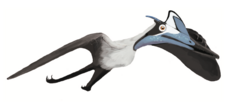 Life reconstruction of Pterodactylus antiquus
|
You are receiving this because you added your name to the subscribers list of the WikiProject Tree of Life. If you no longer wish to receive the newsletter, please remove your name.
Delivered on behalf of Enwebb (talk) 16:33, 1 August 2020 (UTC)
This Month in GLAM: July 2020
| ||||||
Playmarket edit-a-thon
Thanks for setting aside time to attend the Playmarket edit-a-thon Saturday, 15 August. Since New Zealand was placed back into Level 2/Level 3 status on Wednesday 12 August the social social distancing required means it's not possible for all participants to work at the Playmarket offices. So we are going to do it remotely. I hope you are still able to participate.
The new schedule starts with: 11:00 am NZST: Introduction online at Whereby. Participants will choose articles to work on, and be briefed on resources available and communication during the day.
More information on the project page: http://en.wiki.x.io/wiki/Wikipedia:Meetup/Wellington/Playmarket_Edit-A-Thon
Project organiser Pakoire (talk) 04:52, 13 August 2020 (UTC)
September Women in Red edithons

|
--Megalibrarygirl (talk) 17:53, 29 August 2020 (UTC) via MassMessaging
August 2020 Tree of Life Newsletter

- September 2021—Issue 016
- Tree of Life
- Welcome to the Tree of Life newsletter!
|
|
|
|
| Hoax taxon sniffed out after nearly fifteen years |
|
Cross posted from the Signpost  On August 7, WikiProject Palaeontology member Rextron discovered a suspicious taxon article, Mustelodon, which was created in November 2005. The article lacked references and the subsequent discussion on WikiProject Palaeontology found that the alleged type locality (where the fossil was first discovered) of Lago Nandarajo "near the northern border of Panama" was nonexistent. In fact, Panama does not even really have a northern border, as it is bounded along the north by the Caribbean Sea. No other publications or databases mentioned Mustelodon, save a fleeting mention in a 2019 book that presumably followed Wikipedia, Felines of the World. The article also appeared in four other languages, Catalan, Spanish, Dutch, and Serbian. In Serbian Wikipedia, a note at the bottom of the page warned: "It is important to note here that there is no data on this genus in the official scientific literature, and all attached data on the genus Mustelodon on this page are taken from the English Wikipedia and are the only known data on this genus of mammals, so the validity of this genus is questionable." Editors took action to alert our counterparts on other projects, and these versions were removed also. As the editor who reached out to Spanish and Catalan Wikipedia, it was somewhat challenging to navigate these mostly foreign languages (I have a limited grasp of Spanish). I doubted that the article had very many watchers, so I knew I had to find some WikiProjects where I could post a machine translation advising of the hoax, and asking that users follow local protocols to remove the article. I was surprised to find, however, that Catalan Wikipedia does not tag articles for WikiProjects on talk pages, meaning I had to fumble around to find what I needed (turns out that WikiProjects are Viquiprojectes in Catalan!) Mustelodon remains on Wikidata, where its "instance of" property was swapped from "taxon" to "fictional taxon". How did this article have such a long lifespan? Early intervention is critical for removing hoaxes. A 2016 report found that a hoax article that survives its first day has an 18% chance of lasting a year.[1] Additionally, hoax articles tend to have longer lifespans if they are in inconspicuous parts of Wikipedia, where they do not receive many views. Mustelodon was only viewed a couple times a day, on average. Mustelodon survived a brush with death three years into its lifespan. The article was proposed for deletion in September 2008, with a deletion rationale of "No references given; cannot find any evidence in peer-reviewed journals that this alleged genus actually exists". Unfortunately, the proposed deletion was contested and the template removed, though the declining editor did not give a rationale. Upon its rediscovery in August 2020, Mustelodon was tagged for speedy deletion under CSD G3 as a "blatant hoax". This was challenged, and an Articles for Deletion discussion followed. On 12 August, the AfD was closed as a SNOW delete. WikiProject Palaeontology members ensured that any trace of it was scrubbed from legitimate articles. The fictional mammal was finally, truly extinct. At the ripe old age of 14 years, 9 months, this is the longest-lived documented hoax on Wikipedia, topping the previous documented record of 14 years, 5 months, set by The Gates of Saturn, a fictitious television show, which was incidentally also discovered in August 2020. How do we discover other hoax taxa? Could we use Wikidata to discover taxa are not linked to databases like ITIS, Fossilworks, and others?
|
| Spotlight with Mattximus |
 This month's spotlight is with Mattximus, author of two Featured Articles and 29 Featured Lists at current count.
I think I have a compulsion to make lists, it doesn't show up in my real life, but online I secretly get a lot of satisfaction making orderly lists and tables. It's a bit of a secret of mine, because it doesn't manifest in any other part of my life. My background is in biology, so this was a natural (haha) fit.
This experiment was just to see if I could get any random article to FA status, so I picked the very first alphabetical animal species according to the taxonomy and made that attempt. Technically, there isn't enough information for a species page so I just merged the species into a genus and went from there. It was a fun exercise, but doing it alone is not the most fun so it's probably on pause for the foreseeable future. Note: Aporhynchus is the first alphabetical taxon as follows: Animalia, Acanthocephala, Archiacanthocephala, Apororhynchida, Apororhynchidae, Apororhynchus
I would recommend getting a good article nominated, then a featured list up before tackling the FA. Lists are a bit more forgiving but give you a taste of what standards to expect from FA. The most time consuming thing is proper citations so make sure that is in order before starting either.
My personality in real life does not match my wikipedia persona. I'm not a very organized, or orderly in real life, but the wikipedia pages I brought to FL or FA are all very organized. Maybe it's my outlet for a more free-flowing life as a scientist/teacher.
The fact that wikipedia exists free of profit motive and free for everyone really is something special and I encourage everyone to donate a few dollars to the cause. |
| August DYKs |
|
You are receiving this because you added your name to the subscribers list of the WikiProject Tree of Life. If you no longer wish to receive the newsletter, please remove your name.
Delivered on behalf of Enwebb (talk) 17:10, 2 September 2020 (UTC)
August 2020 Tree of Life Newsletter

- September 2021—Issue 016
- Tree of Life
- Welcome to the Tree of Life newsletter!
|
|
|
|
| Hoax taxon sniffed out after nearly fifteen years |
|
Cross posted from the Signpost  On August 7, WikiProject Palaeontology member Rextron discovered a suspicious taxon article, Mustelodon, which was created in November 2005. The article lacked references and the subsequent discussion on WikiProject Palaeontology found that the alleged type locality (where the fossil was first discovered) of Lago Nandarajo "near the northern border of Panama" was nonexistent. In fact, Panama does not even really have a northern border, as it is bounded along the north by the Caribbean Sea. No other publications or databases mentioned Mustelodon, save a fleeting mention in a 2019 book that presumably followed Wikipedia, Felines of the World. The article also appeared in four other languages, Catalan, Spanish, Dutch, and Serbian. In Serbian Wikipedia, a note at the bottom of the page warned: "It is important to note here that there is no data on this genus in the official scientific literature, and all attached data on the genus Mustelodon on this page are taken from the English Wikipedia and are the only known data on this genus of mammals, so the validity of this genus is questionable." Editors took action to alert our counterparts on other projects, and these versions were removed also. As the editor who reached out to Spanish and Catalan Wikipedia, it was somewhat challenging to navigate these mostly foreign languages (I have a limited grasp of Spanish). I doubted that the article had very many watchers, so I knew I had to find some WikiProjects where I could post a machine translation advising of the hoax, and asking that users follow local protocols to remove the article. I was surprised to find, however, that Catalan Wikipedia does not tag articles for WikiProjects on talk pages, meaning I had to fumble around to find what I needed (turns out that WikiProjects are Viquiprojectes in Catalan!) Mustelodon remains on Wikidata, where its "instance of" property was swapped from "taxon" to "fictional taxon". How did this article have such a long lifespan? Early intervention is critical for removing hoaxes. A 2016 report found that a hoax article that survives its first day has an 18% chance of lasting a year.[1] Additionally, hoax articles tend to have longer lifespans if they are in inconspicuous parts of Wikipedia, where they do not receive many views. Mustelodon was only viewed a couple times a day, on average. Mustelodon survived a brush with death three years into its lifespan. The article was proposed for deletion in September 2008, with a deletion rationale of "No references given; cannot find any evidence in peer-reviewed journals that this alleged genus actually exists". Unfortunately, the proposed deletion was contested and the template removed, though the declining editor did not give a rationale. Upon its rediscovery in August 2020, Mustelodon was tagged for speedy deletion under CSD G3 as a "blatant hoax". This was challenged, and an Articles for Deletion discussion followed. On 12 August, the AfD was closed as a SNOW delete. WikiProject Palaeontology members ensured that any trace of it was scrubbed from legitimate articles. The fictional mammal was finally, truly extinct. At the ripe old age of 14 years, 9 months, this is the longest-lived documented hoax on Wikipedia, topping the previous documented record of 14 years, 5 months, set by The Gates of Saturn, a fictitious television show, which was incidentally also discovered in August 2020. How do we discover other hoax taxa? Could we use Wikidata to discover taxa are not linked to databases like ITIS, Fossilworks, and others?
|
| Spotlight with Mattximus |
 This month's spotlight is with Mattximus, author of two Featured Articles and 29 Featured Lists at current count.
I think I have a compulsion to make lists, it doesn't show up in my real life, but online I secretly get a lot of satisfaction making orderly lists and tables. It's a bit of a secret of mine, because it doesn't manifest in any other part of my life. My background is in biology, so this was a natural (haha) fit.
This experiment was just to see if I could get any random article to FA status, so I picked the very first alphabetical animal species according to the taxonomy and made that attempt. Technically, there isn't enough information for a species page so I just merged the species into a genus and went from there. It was a fun exercise, but doing it alone is not the most fun so it's probably on pause for the foreseeable future. Note: Aporhynchus is the first alphabetical taxon as follows: Animalia, Acanthocephala, Archiacanthocephala, Apororhynchida, Apororhynchidae, Apororhynchus
I would recommend getting a good article nominated, then a featured list up before tackling the FA. Lists are a bit more forgiving but give you a taste of what standards to expect from FA. The most time consuming thing is proper citations so make sure that is in order before starting either.
My personality in real life does not match my wikipedia persona. I'm not a very organized, or orderly in real life, but the wikipedia pages I brought to FL or FA are all very organized. Maybe it's my outlet for a more free-flowing life as a scientist/teacher.
The fact that wikipedia exists free of profit motive and free for everyone really is something special and I encourage everyone to donate a few dollars to the cause. |
| August DYKs |
|
You are receiving this because you added your name to the subscribers list of the WikiProject Tree of Life. If you no longer wish to receive the newsletter, please remove your name.
Delivered on behalf of Enwebb (talk) 22:52, 2 September 2020 (UTC)
This Month in GLAM: August 2020
| ||||||
October editathons from Women in Red

|
--Megalibrarygirl (talk) 15:09, 21 September 2020 (UTC) via MassMessaging
This Month in GLAM: September 2020
| ||||||




